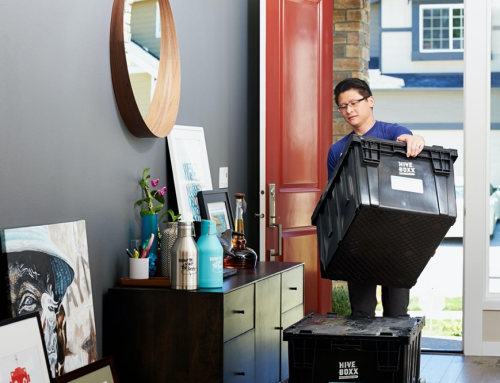
Photo by Dominik Vanyi on Unsplash
Our basic attachment styles form during childhood. I’ve written about attachment styles in several articles on brendaknowles.com’s blog, space2live, but I’ll summarize the different styles to refresh your memory.
The most ideal style is secure. A secure attachment arises when we know we can count on our primary caregiver. They are available and responsive to us the majority of the time. We grow up trusting others will be there for us physically and emotionally and thus we are not afraid of closeness.

Photo by Tanja Heffner on Unsplash
A less secure and second attachment style where a caregiver is inconsistent with their responses and reassurance is called anxious or ambivalent. As adults with an anxious attachment style, our emotions exist close to the surface and we have a constant fear of being abandoned. To abate this fear, we often ask for reassurance.
An even less secure and third attachment style develops when the primary caregiver is abusive, rejecting or absent. The recipient of such negligent care becomes avoidantly attached. As adults in relationships, avoidant attachment looks like someone who suppresses emotions to avoid appearing vulnerable. As an avoidant type we know no one will be there for us if we need them, so we become highly independent and averse to others depending on us. We see others as untrustworthy, even dangerous when it comes to intimacy or closeness.
Our attachment styles are most obvious when we or our primary relationships want connection. They also flare when there is stress in our lives — be it from the outside world or inside a relationship.
Attachment styles during conflict
Someone with a secure attachment style handles discord by working together to resolve problems and using care and comfort to soothe their partner.
The anxiously attached get angry, demand, criticize and generally protest when they fear abandonment or feel threatened in their relationships. Interestingly, the criticism and anger push an avoidant partner to withdraw because they do not feel safe.
The avoidant’s go-to strategy during conflict is to shut down, withdraw and self-soothe.
Are you anxious, avoidant or both?
We can exhibit different styles depending on the people we are with and how safe we feel.
Our relationships with our family members, including children, can set off our attachment fears.
For instance, I am more anxious with Mark, my fiancé — I need reassurance. He is a reasonably secure partner, but because he is so important to me, it is easy to slip into worries about not meeting all his needs or fear I am too much for him to handle emotionally.
Fortunately, he is excellent at allaying my fears with a loving touch or a reassuring comment.
Avoidant mom
I am more avoidant with my children because they can be avoidant or angry/critical with me. Their protests and demands make me want to shut down or pull away from the situation. I can’t depend on them to support me. Parenting is not a reciprocal relationship, therefore it is inherently scary for an avoidantly attached person.

Photo by Sharon McCutcheon on Unsplash
In the past, my natural inclination was to move away from conflict and dependency (mine and that of others). I had/have avoidantly attached tendencies. The tendencies have hurt my relationships.
Overall I’m working on moving toward my primary relationships. I’ve learned through research that taking part in secure relationships changes your outlook on life and your physiology for the better.
Mark’s secure style gives me the safe base I need to reciprocate with him and reach out more confidently to my children.
Move toward others even if it is uncomfortable
Now, I consciously pursue ways to increase my connections with others. For example, summers have historically been a difficult time for me. My kids are home and there are no time or space to self-soothe or claim independence. I am a team with the family. I am needed throughout the day. I have to deal with negative comments and complaints from my children.
This year I am trying something different. Rather than escaping to my office and keeping the kids at arm’s length while I work, I have made it clear that I am going to work in my office for two hours at a time (I used to go for four hour stretches) and they are welcome to come talk to me if they need something. In the past, I basically said they need to be bleeding to warrant interrupting my work.
Greetings and goodbyes increase security
For the last couple of years I have also instigated an unspoken policy to greet my loved ones face-to-face soon after they enter the house. I give them a smile, a hug and a check in with my eyes and my words. I also walk them to the door when they leave and say goodnight in person if at all possible each night. These greeting and goodbye tips are compliments of Dr. Stan Tatkin in his Wired for Love book. They are simple and effective. Those small moments of connection smooth over feelings of disconnection and insecurity.
I want my children and partner to feel secure. As I strive to connect with them, versus keeping myself safe by avoiding closeness, I also improve my own security and tolerance for intimacy.
What is your attachment style? How could you increase security in your family? When are you most insecure?








Hi Brenda,
Thanks for this honest and insight post! I would love to hear more about your experiences with “avoidant” tendencies, especially from the point of view of another woman.
All my life I’ve been torn in two directions- between wanting to closeness and intimacy with friends and family and craving escape and independence. I’ve travelled all over the world, feeling both fulfilled and extremely homesick, kind of like the woman in the “Cactus Tree” song by Joni Mitchelle who is “too busy being free” to settle down with anyone.
As a child, I often dreamed of running away from home. As a young twenty-something I had actual recurring dreams of being a runaway bride. But at the same time I strove to find love and friendship and to stay in contact with the members of my family who are most supportive.
I think part of this comes from how my family of origin was sometimes a refugee and sometimes distressingly full of pressure, bullying and conflict. I also think it’s partly my introverted nature to want to be alone and my sensitivity that I feel like I can soothe better than anyone who doesn’t know me as well as I know myself. But it can be so lonely and I don’t want to go through life all alone.
Recently I have met a great man who treats me well and who I enjoy spending time with. Sometimes, though, I can still feel my panicky avoidant nature kick in. I’m trying really hard to actual communicate by saying “good night” at the end of the day, making and keeping plans to get together, and sending little messages that show I still remember he exists even when I’m doing my own thing. But it definitely pushes against the comfort zone of my well-worn avoidant habits.
I’m also a bit scared to become a mother because….well…as an ’empath’ it’s almost like I’ve spent much of my life so far expected to ‘mother’ grown adults who were behaving like children. There’s this cranky inner voice in me that’s like “When is it my turn to be taken care of?” (Although maybe caring for an actual toddler acting like a toddler instead of grownups acting like toddlers might be a refreshing change?!)
Hello JJPK, So much of what you wrote resonates with me. I’ve always had wanderlust but I have not traveled alone very much. I believe we all want to belong and be a part of something. Our nature is to connect at some level with others. Our nervous systems make it enticing to be alone frequently. It just feels safer and easier. I encourage you to keep your relationship going. I totally understand the feeling of panic when there has been a lot of togetherness. I’ve found novelty done together is a good aid. Also, the more I reach out and accept companionship, the more comfortable it becomes. When our loved ones feel secure, they calm down and give us freedom rope. Good luck with your adventure!
Motherhood is a whole other story! So much to say. I’m going to boldly say do not have more than two children. It is a complicated world. To maintain some peace in our hearts and minds, we have to keep things simple and know your values. More than two children and you are struggling to do things well. My two cents. Best and warmest wishes!